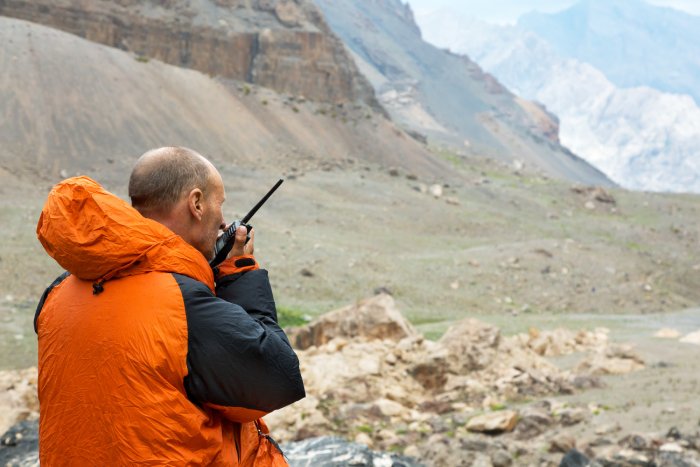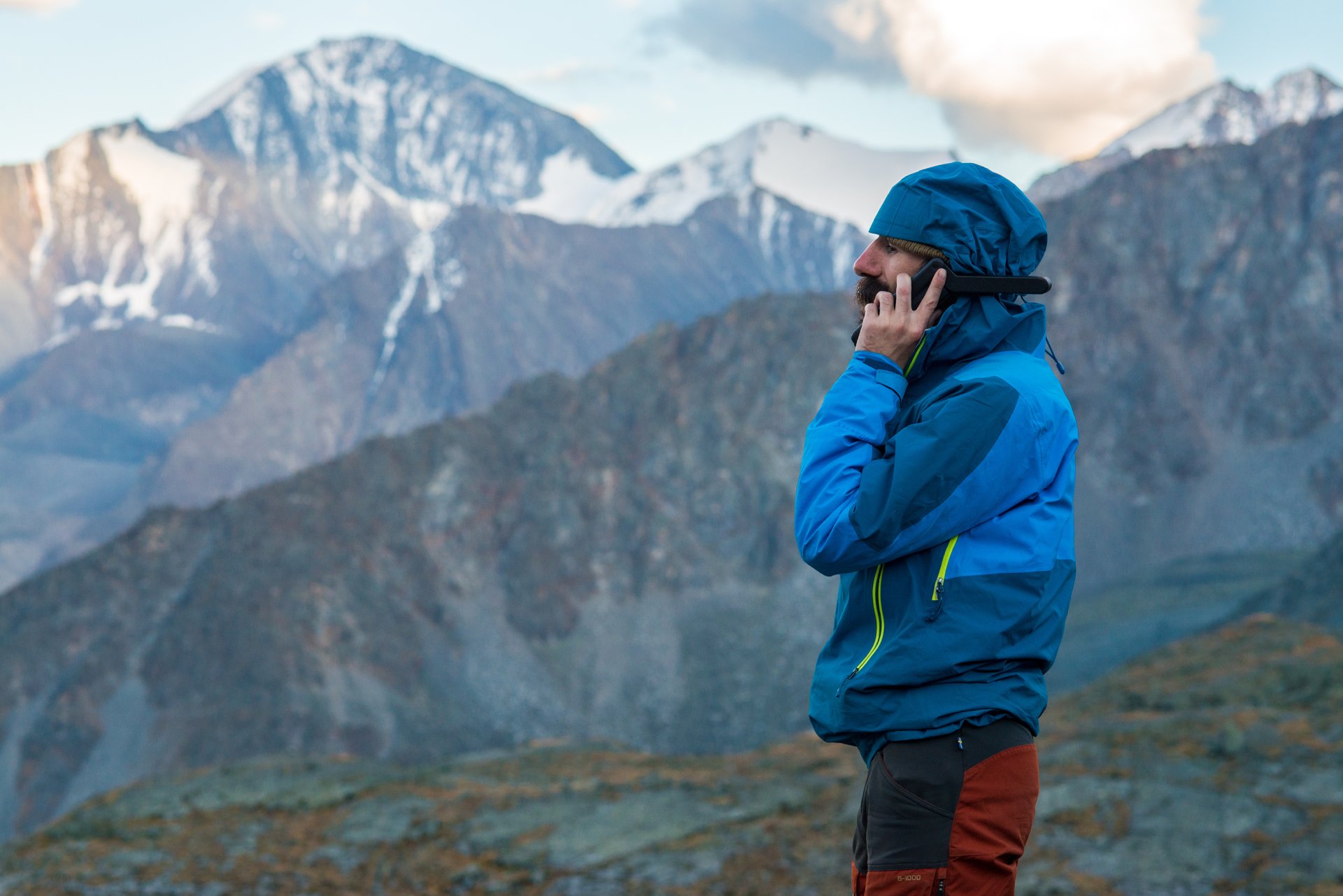Article Highlights:
- Global Rescue responds to hundreds of SOS alerts each month, providing critical medical and security assistance through satellite devices.
- Real-life rescue examples include incidents such as a life raft rescue off the Atlantic coast, a severe burn at a campsite in Canada, and a snake bite in Australia, all coordinated through satellite communication.
- Understanding how to properly use a satellite messaging device in emergencies is crucial for ensuring timely rescues and can be the difference between life and death.
Contacting Global Rescue Through a Satellite Device

If you need rescue, you need a way to communicate your emergency. Whether by yourself or with a group, nearby or far away, rescues begin with a distress call. That means you must have the ability to make an emergency outreach. You have a two-way communication device, such as a satellite phone or satellite messaging and tracking device, just in case. But knowing how to use it in an emergency is essential, and could be the difference between life and death.
Global Rescue handles hundreds of emergencies and SOS calls for medical or security help every month. The following are a few highlights from recent emergency events from around the world.
Life Raft SOS From Atlantic Coast
Global Rescue operations received an SOS alert from a satellite messaging device owner off the coast of Georgia who needed assistance, indicating they were stranded in a life raft following the sinking of their vessel. Operations contacted the United States Coast Guard 7th District and communicated with an officer who confirmed they were aware of the situation and were already en route. The officer mentioned that a vessel would arrive within 15 minutes and that a helicopter had just reached the area. A few hours later, Operations verified with the SOS device owner that they had been rescued and were safely back on land.
Severe Burn SOS From a Campsite
An SOS device owner contacted Global Rescue operations from British Columbia, Canada, to report an individual who sustained severe burns on their left foot from a camp water stove. The injured individual was responsive and breathing normally. His vital signs were stable. He received basic first aid while Global Rescue operations personnel contacted first responders and assisted in the rescue and recovery.
Snake Bite SOS From Australia
Global Rescue operations received an SOS alert from a satellite messaging device owner whose wife had been bitten on the foot by a black snake in Australia. She was experiencing numbness near the bite mark, along with thirst and nausea. Operations alerted first responders and coordinated with emergency authorities for rescue. The reporting individual confirmed that an ambulance had arrived, and the rescue was underway.
Bee Sting SOS Near Rogue River
Global Rescue operations received an SOS alert from a satellite messaging device owner near Rogue River, Oregon, who reported their companion suffered a bee sting and experienced dizziness and nausea. Operations provided instructions for administering an EpiPen and identifying symptoms of a severe allergic reaction. They reported the incident to first responders. Later, the SOS device owner communicated that their companion had been taken by vehicle to a nearby location for assistance.
Roll Over SOS in the Backcountry
An SOS alert was sent by an individual to Global Rescue operations personnel reporting their off-road vehicle had rolled over in the backcountry of British Columbia, Canada, leaving them stranded. Fortunately, there were no major injuries reported but a request was made for a tow truck to flip the vehicle right side up. Operations contacted several local towing companies on behalf of the SOS device owner.
Dislocated Shoulder SOS From Sweden
Global Rescue operations received an SOS alert from a satellite messaging device owner near Arjeplog, Sweden, reporting that a 31-year-old hiker needed evacuation after falling and dislocating his shoulder. Operations contacted Swedish emergency responders to report the incident and coordinated with local authorities for the evacuation. Medical operations personnel provided health advice on immobilizing the dislocated arm using a makeshift sling. Operations additionally facilitated a helicopter rescue at no charge to the patient.
Over Exposure SOS
A backpacker near Yosemite National Park in California activated his satellite SOS device to report that he had fallen into a creek, leaving all his gear wet. Uninjured, he expressed concern that he would not survive the expected low temperatures overnight, especially since he was at an elevation of 8,500 feet, and had no means to bail out. Operations contacted local authorities and triggered an immediate helicopter rescue.
Trekking SOS From a Canadian Park
Global Rescue received an SOS alert about a 65-year-old woman who had injured her ankle while trekking along the East Sooke Regional Park Coast Trail in Canada. There were no signs of bleeding or trauma reported. Operations contacted Sooke RCMP and confirmed that first responders were responding to the location. The SOS device owner confirmed that rescuers had located them.
Motorcycle Crash SOS From Australia
An SOS satellite message was sent to Global Rescue to report that a 54-year-old woman had been involved in a motorcycle accident in Wyandra, Australia, and was experiencing difficulty breathing and could have broken ribs. Operations immediately notified emergency responders. The SOS sender later confirmed that the ambulance had arrived at the scene.
Lost on an Oregon Trail SOS
An SOS alert was initiated by an individual who was lost while attempting to reach Two Pan Trail in Oregon. Global Rescue operations personnel notified first responders and confirmed that a search and rescue team would initiate their mission at daylight. The individual camped overnight for safety. Later, Operations received an update that the individual had been found safe.
Massive Blood Loss SOS
A woman activated her satellite SOS alert to report that a 59-year-old male had sustained severe injuries to his fingers after slipping on rocks near Imnaha, Oregon. His two nurse companions managed the injury by flushing it with clear water, applying bacitracin and ice, and maintaining direct pressure while elevating the hand. Operations contacted emergency services and confirmed that a helicopter rescue had been dispatched. Operations later confirmed a successful rescue.
Head Injury SOS
Operations received an SOS alert from Cody, Wyoming, reporting that a woman suffered a ground-level fall on gravel and struck her head. She remained conscious but needed pressure to stem the bleeding and was slurring her speech. Global Rescue medical operations personnel provided medical advice while contacting first responders. An ambulance arrived and transported the injured person for treatment.

How To Send an SOS to Global Rescue
[Related Reading: How To Send an SOS: Two-way Communication Success]
SOS device users should review the instructions regarding their device’s SOS features and procedures. Understand who receives the SOS message signal when it’s sent and what services the SOS monitoring provider offers. Contacting Global Rescue directly at +1 (617) 459-4200 or through a messaging device at ops@globalrescue.com or operations@globalrescue.com is the most straightforward way of obtaining service.









